There comes a time each year, when the bird feeding station transforms slightly, and things get just a bit brighter! In preparation for the return of my neotropical migrating birds, I put away the Zick Dough and a couple of the suet feeders, and replace them with some oranges. Yes—oranges, as in the sweet citrus fruits! Usually this happens around the end of April. My beautiful Bullock’s Orioles return sometime during the first week of May, so I like to be prepared for them!
But it is not just the Orioles who love to eat oranges. Au contraire! Many other feeder birds enjoy their delicious, sweet pulp. Yes, right here in the United States—in the mountain west of Wyoming—I have backyard birds who love eating oranges! Most likely, you do too! Today, I thought I would share with you some of the backyard birds that are attracted to oranges. After you read my list, perhaps you will decide to add some Oranges to your summer bird feeding station, as well!
Oranges for Wild Birds
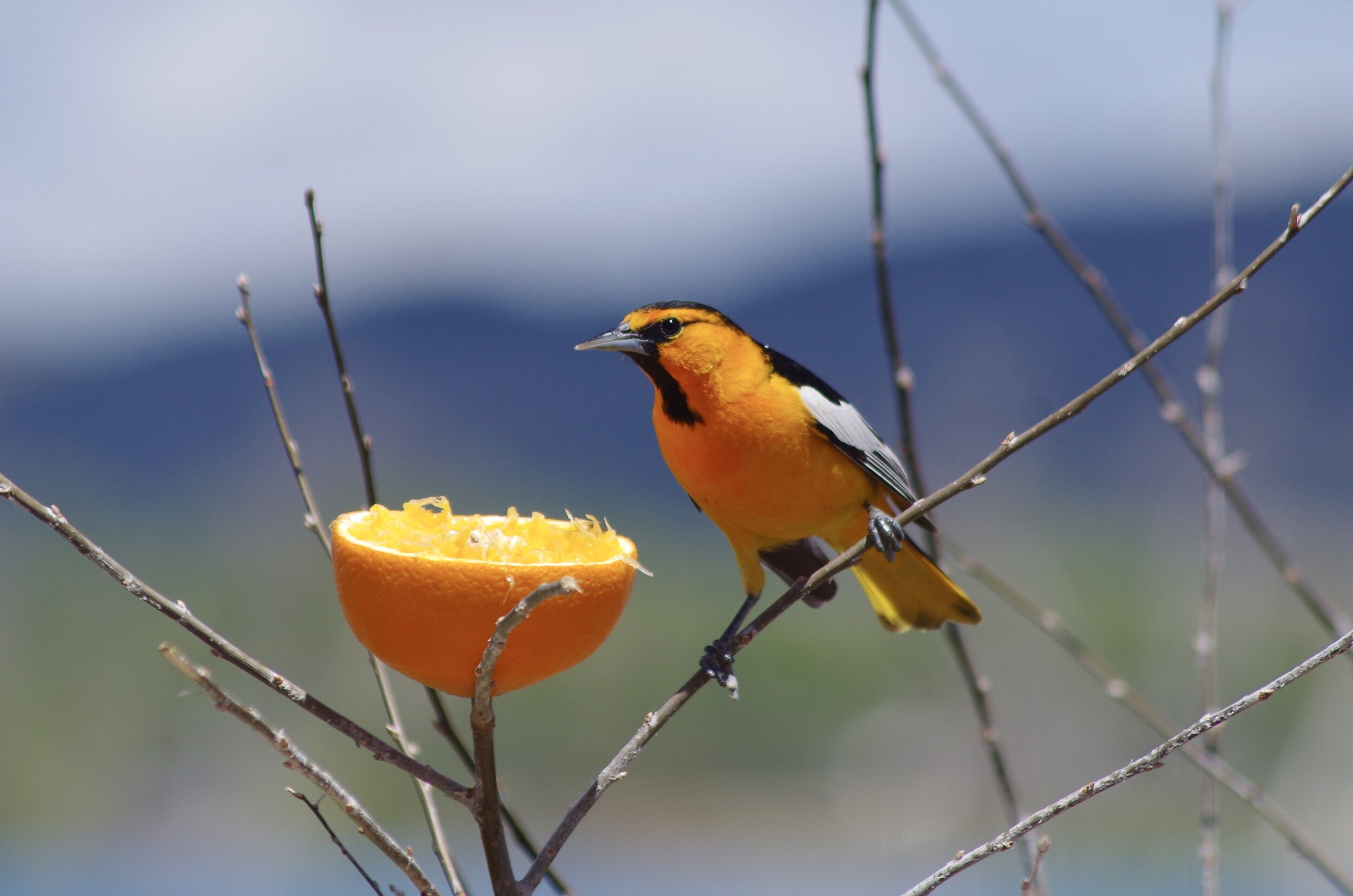

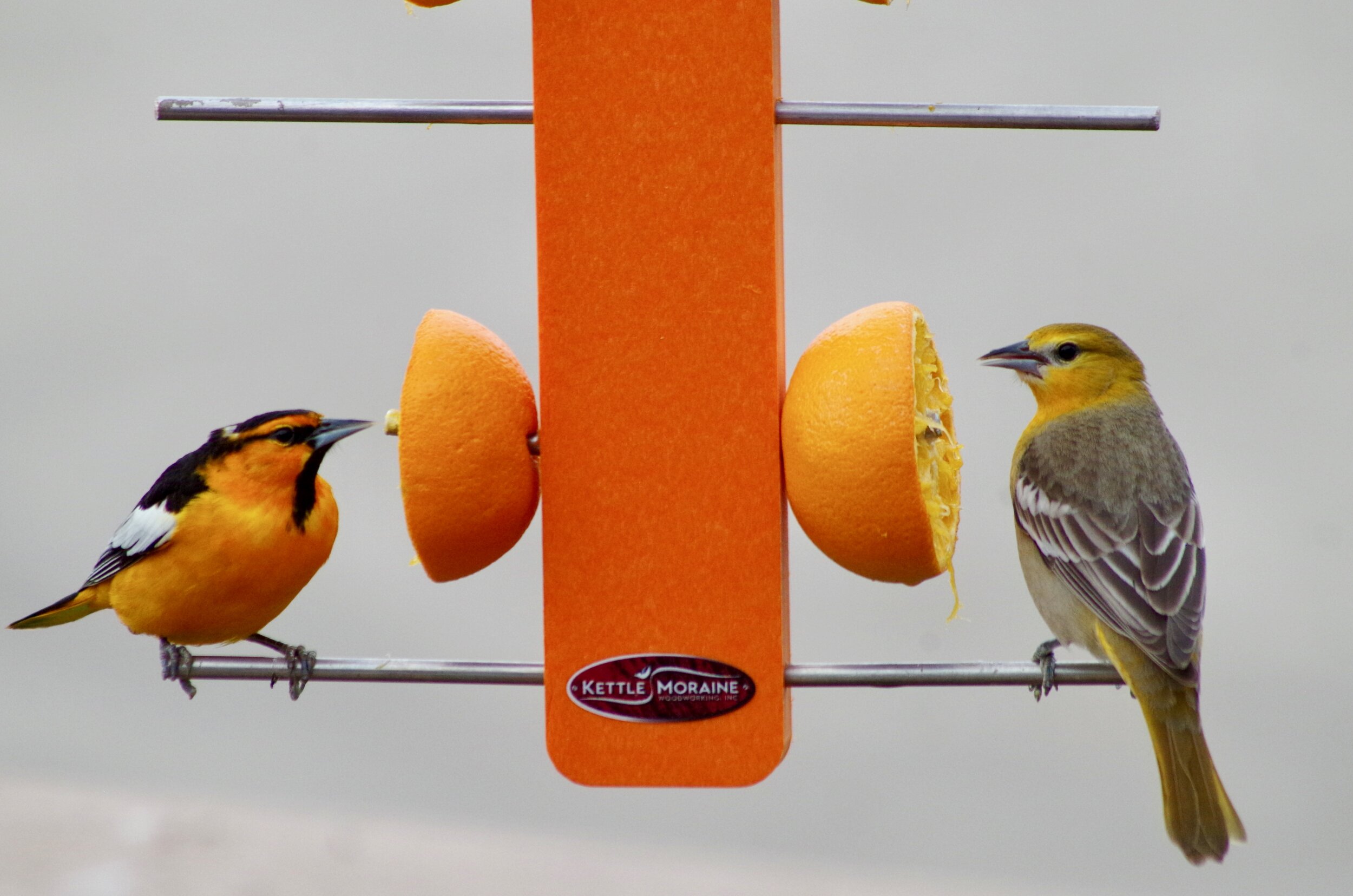
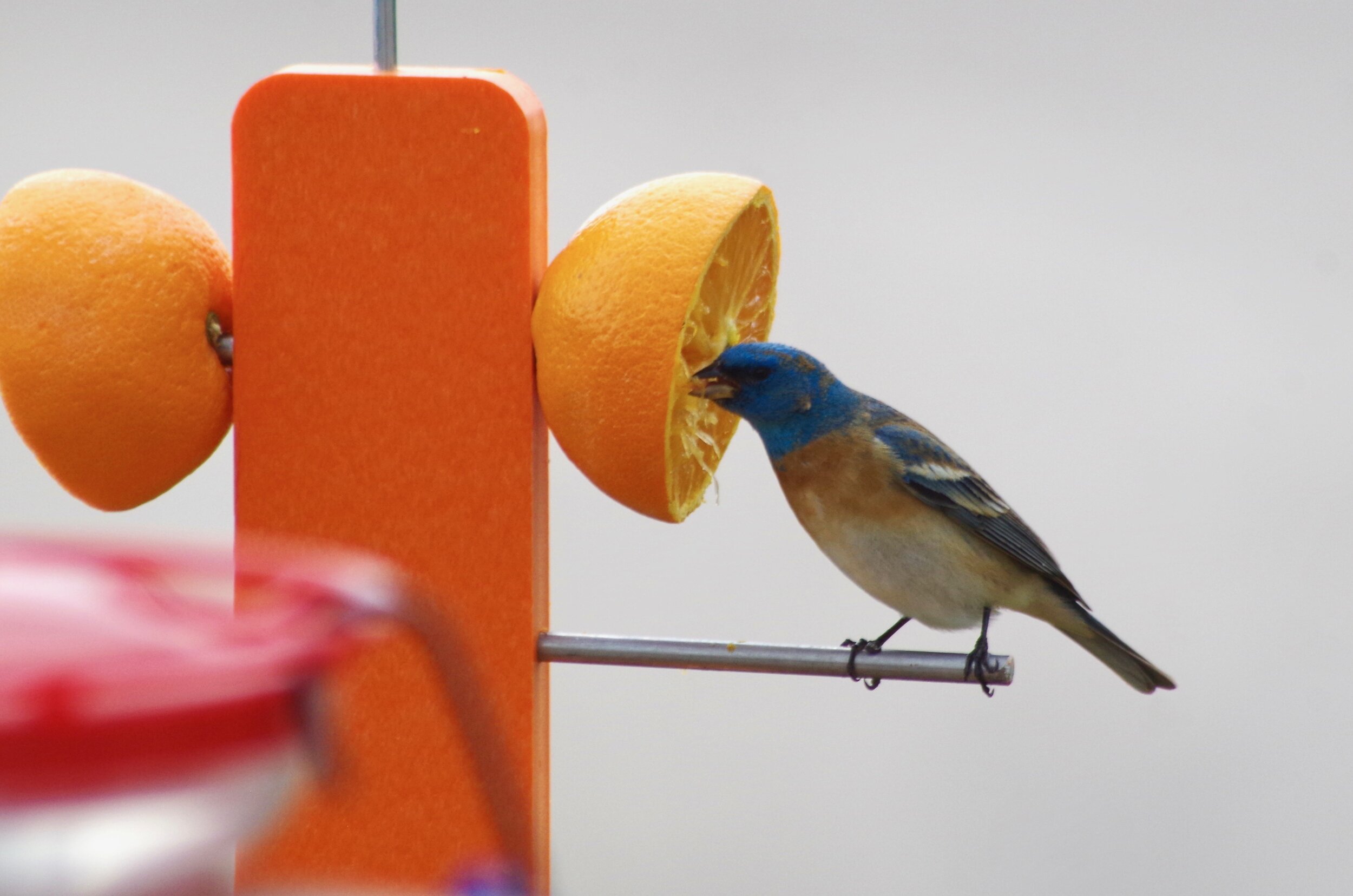
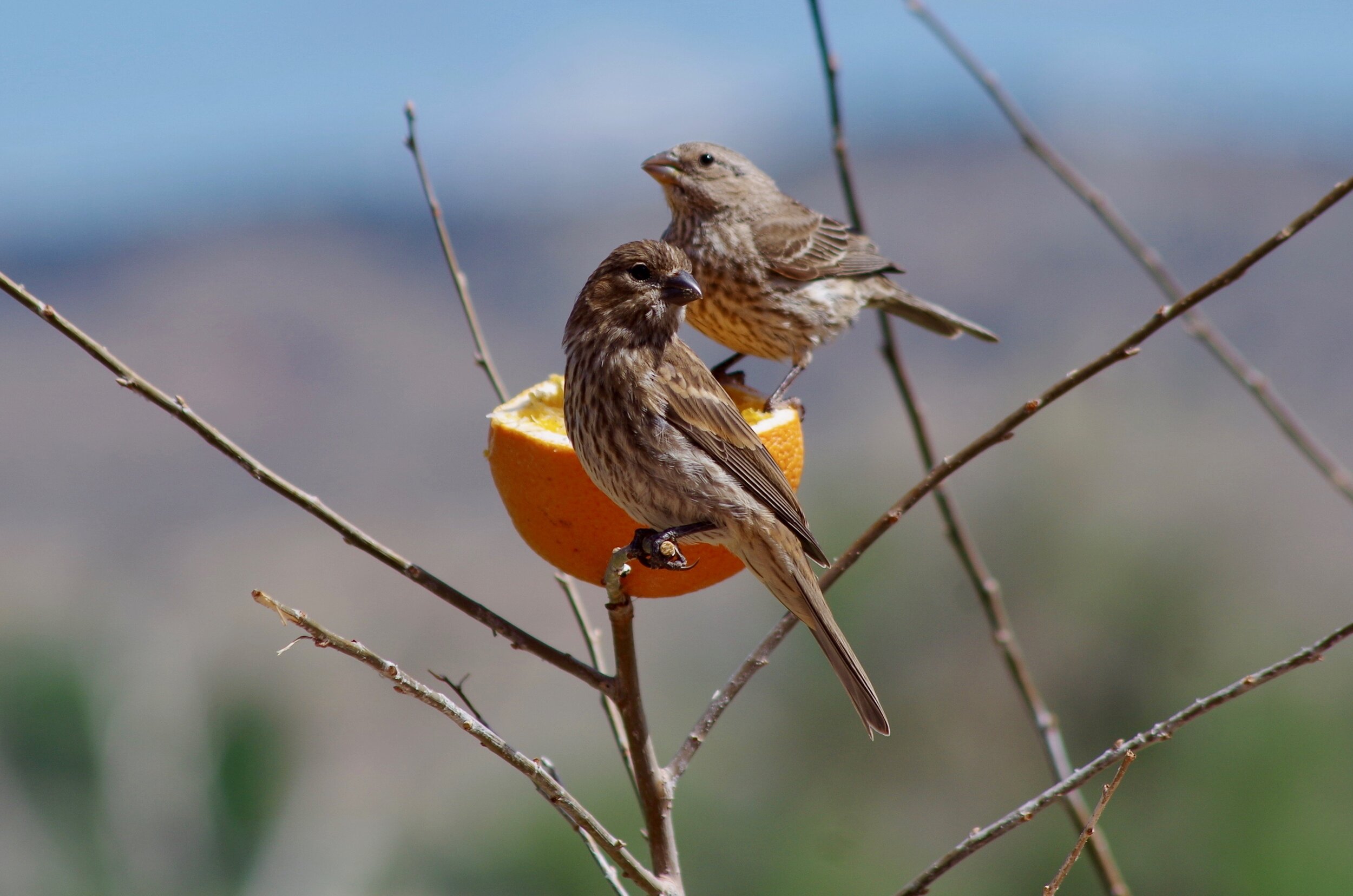
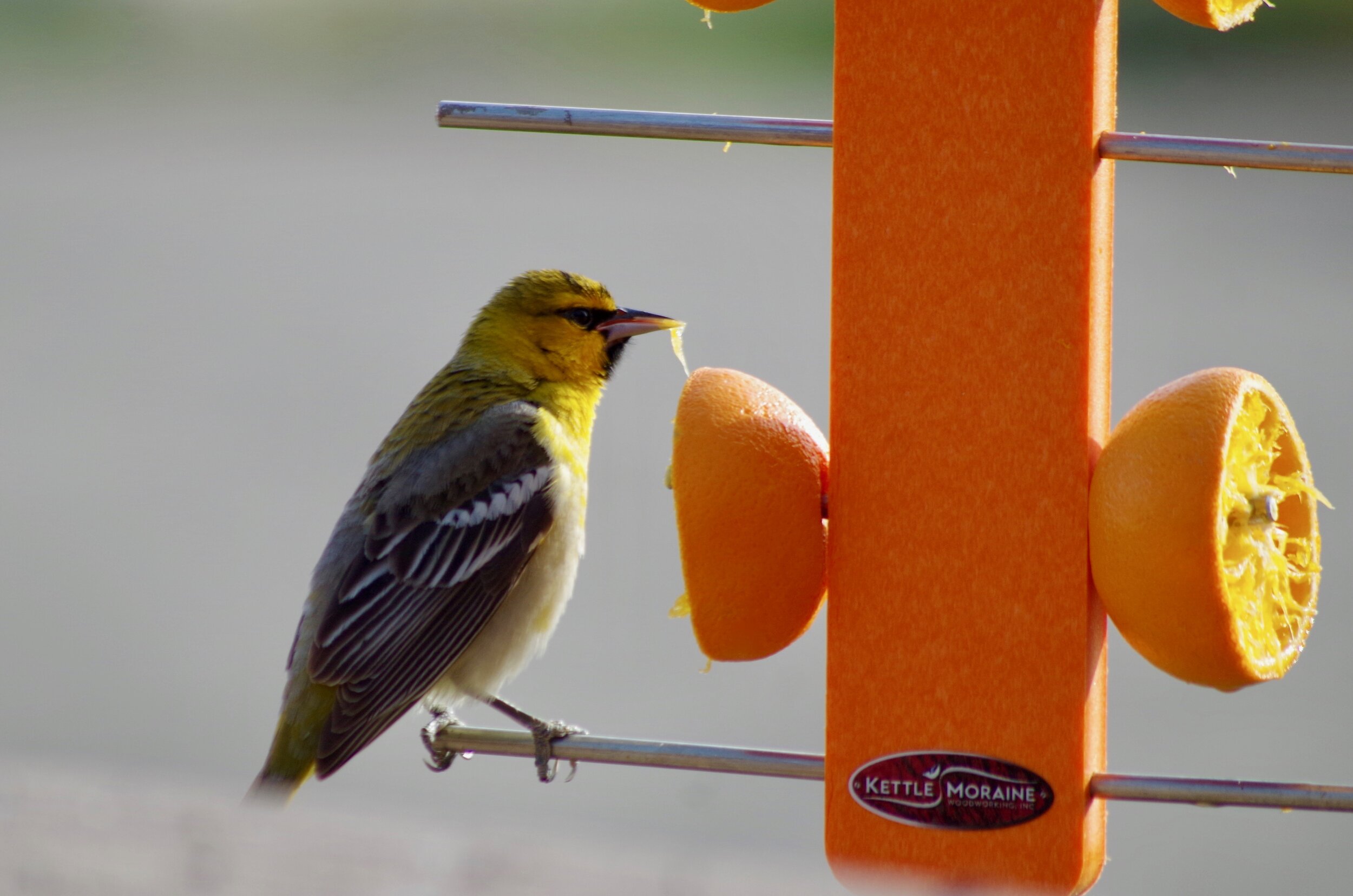
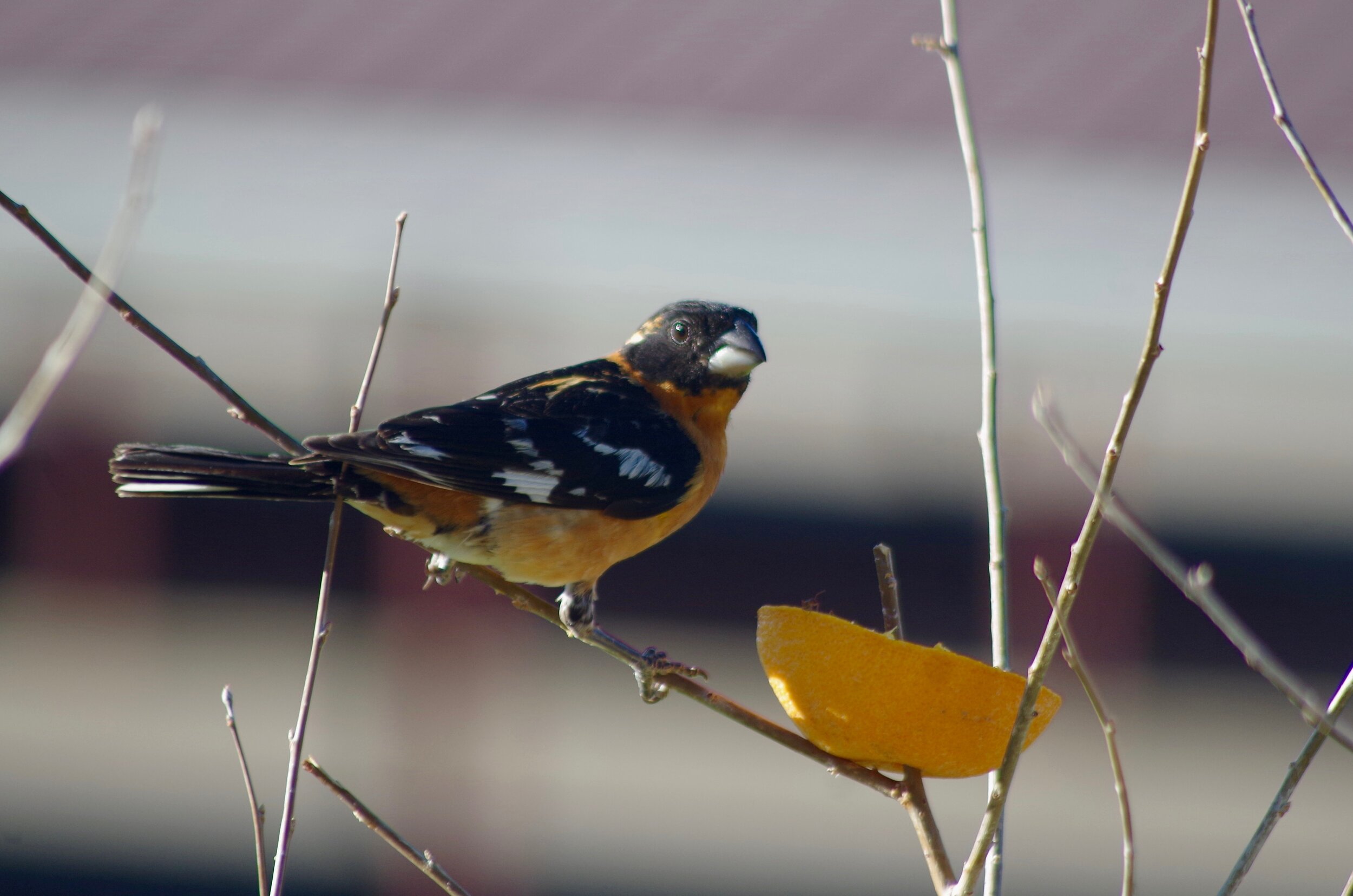
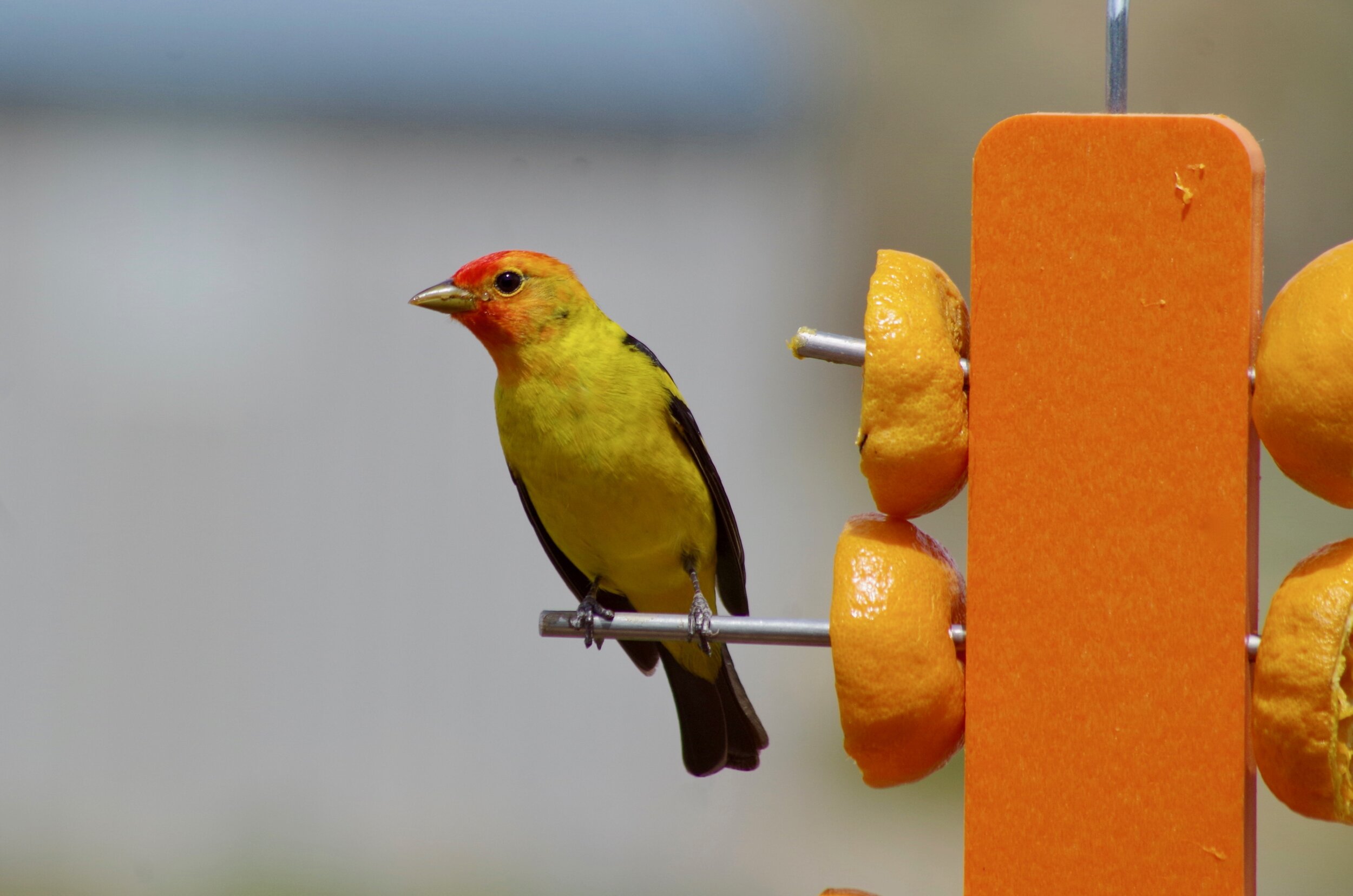
Orioles
Orioles are beautiful, tropical-looking birds. They fly to south america for winter, and then return again each spring. They are renowned for loving oranges (and grape jelly)! The Bullock’s Orioles are our most frequent flyers, and they have bright orange plumage with black details, and a very distinctive cackle. They frequent the oranges from late may and to july, then less frequently once they begin tending to nestlings.
There are a few different Orioles found in the Unites States. If you are on the east coast, then you probably have Baltimore Orioles. If you are in the west, then you probably have Bullock’s Orioles. In between, you might encounter an Orchard Oriole. And if you live in California or the desert southwest, you might become acquainted with a Hooded Oriole. Regardless of what kind of oriole you have in your area, one of their favorite snacks, especially during migration time, is oranges!
As I mentioned earlier, here in Wyoming, we have mainly Bullock’s Orioles, but this year I also had an Orchard Oriole stopping by for some sweet citrus, and much to my excitement, a hybrid Bullock’s x Baltimore Oriole. I occasionally put out grape jelly and other fruits, but oranges, cut in half, are by far the favorite among my orioles. They will always choose oranges, evne when given a spread of multiple choices included other fruits, jellies & jams, and nectar.
Tanagers
Another neotropical migrant found at orange feeders are tanagers. We have only one regular variety of tanager out here in Wyoming—the Western Tanager. Western Tanagers are actually the birds that sparked my interest in offering oranges at my bird feeding station, in the first place! Here’s the story: One morning, Hunter told me we had some sort of bigger goldfinches or something at the feeder—birds with orange faces. Of course, he was who spotted the new birds, and so could only guess what they might have been. He left the house and I eventually decided that, perhaps he was referring to an orange-colored oriole? I cut an orange in half and went and stuck it on our shepherds hook. By the time I got into the house and looked out the kitchen window, a male Western Tanager had already begun eating the oranges! Of course I had to call him and inform him that goldfinches, definitely don’t have RED heads!
And so, if you live in an area with tanagers, you may be able to attract them to your feeding station with orange halves, or other fruit. Mine also enjoy eating apples, and different types of jams & jellies. P.S.—A pair of Bullock’s Orioles quickly caught on to the oranges, shortly after the western tanagers did.
Lazuli Buntings
On occasion, much to my delight and surprise, a Lazuli Bunting will come in and nibble on the oranges. When I first noticed them, I thought perhaps they were eating some sort of fruit fly or insect. But nope, these handsome blue boys are stopping by for beak fulls of delicious orange pulp, too! This is especially surprising, since their normally preferred food is white proso millet!
House Finches
House Finches also adore the oranges. In fact, I consider them the most frequent flyers at the orange feeders. They simply cannot get enough! While orioles and tanagers start stopping by for the oranges in spring, the house finches continue stopping by all throughout summer. I especially love when I start seeing little finch families stopping by the orange halves—they teach them young! (The bird in the cover photo for this post is actually a fledgling house finch, who caught on to the deliciousness of oranges right away.)
Grosbeaks
The Grosbeaks are another bird species that shows more interest in the oranges come summertime. I have heard some folks can attract Rose-Breasted Grosbeaks to their orange feeders, but I have only managed to attract the Black-Headed Grosbeaks to mine. They are beautifully colored birds with chunky beaks and while they prefer the bird seed, every once in a while, they sit and gobble up orange for a spell. Grosbeaks also like grape jelly and apples, but like Orioles, they seem to prefer oranges, above all!
Other Orange-Eaters
There are several other birds you may be able to attract to your feeding station with oranges, including: catbirds, thrashers, and various types of wood peckers. We have catbirds here, but they stay in the relatively thick cover of our tree belt or the dense thickets along the river. I have never seen one venture over to our actual yard. I have heard other folk on social media mention that they have brown thrashers or mockingbirds stopping by to eat fruit at their bird feeding stations; neither of which are very common species in my are. Red-Bellied Woodpeckers and Downy Woodpeckers also partake in oranges, if you have them in your yard during summer; I don’t. If I’m missing any orange-eating birds, please share them with us, below, by leaving a comment! What birds do you have visiting your yard to eat oranges or other fruit offerings you provide?
How to Offer Oranges to your Backyard Birds
Now that you are convinced that you should incorporate oranges in your bird feeding station this summer, to attract new birds and increase the variety of backyard birds visiting you, let me tell you how simple it is.
Simply slice oranges in half and skewer them pretty much anywhere!
You can poke them on the hook ends of shepherds hooks holding your bird feeders. You can poke them on visible trees or shrubs or snags. You can set them on your deck railing, a platform feeder, or an old stump. You can make a DIY Orange feeder using a block of scrap wood and some nails or screws—just be sure to use a nail or screw to hold each orange, and one below as a perch. Or you can purchase any number of different orange bird feeders. No matter how you present the oranges, you just need to make sure you are placing them in a visible spot, and keeping the oranges fresh. Birds, in passing, or flying from treetop to treetop, should be able to see your oranges. During spring when the weather is a bit cooler, you can get better mileage from your oranges. For me, they will last about two days before they are dried or gobbled up. When the heat of summer sets in, they really need to be changed out daily. Once they start getting dry and dehydrated, the birds lose interest.
So, there you have it—diversify your bird feeding station by rolling out some oranges! Attract new, different, and brightly-colored birds to your yard. Have fun with it, and remember, like all things bird feeding related, be patient!

